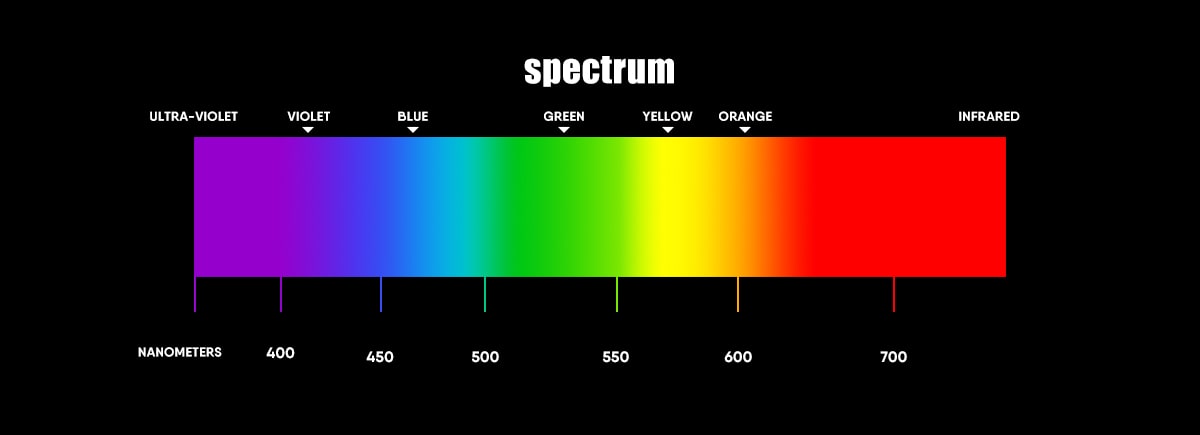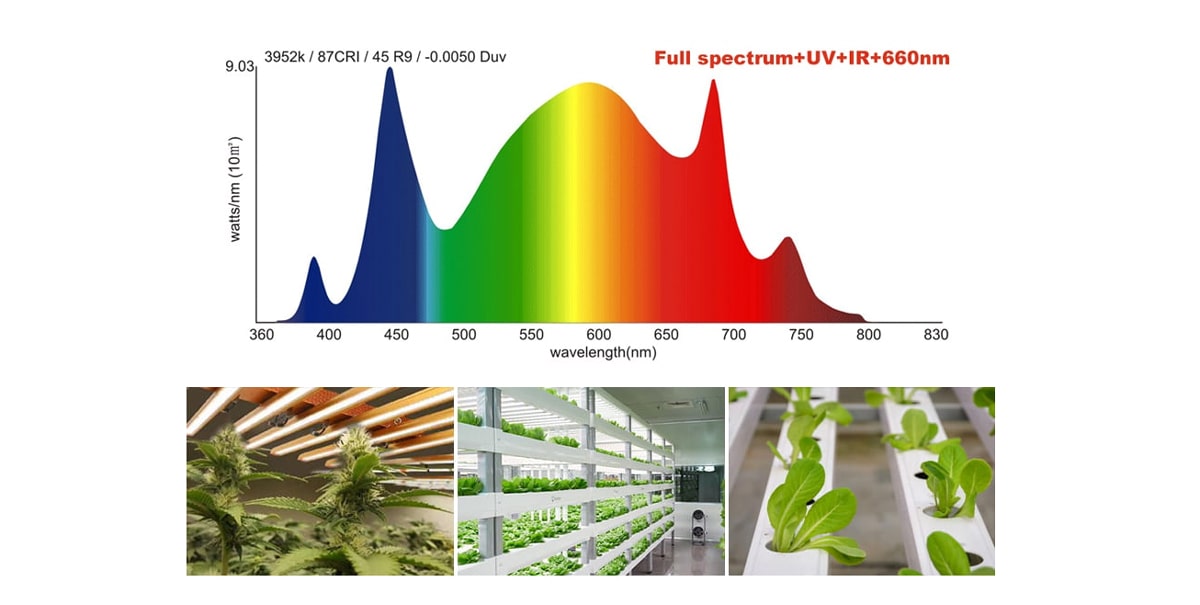
Plant growth requires light energy for photosynthesis and the use of light energy to obtain nutrients necessary for growth and development.
Photosynthesis is the key to plant growth and development. The composition of light contains many different spectral components, and light with wavelengths between 380 and 760 nm (that is, red, yellow, green, blue, and purple light) is an active band in the spectrum, and different spectral wavelengths will Have different effects on plants. So in this article, we enumerate the different effects of different spectra/colors on plants.
Ultraviolet (10-400nm):
1. Affect the special morphology of the plant, the stem is short, the leaf surface is reduced, the hair is developed, the accumulation increases, the chlorophyll increases, and the color is bright;
2. Long ultraviolet (200NM-280NM) has a stimulating effect on the growth of plants, can increase crop yields, and promote the synthesis of proteins, sugars and acids. Illuminating the seeds with long ultraviolet rays can improve the germination of the seeds;
3. Short ultraviolet (280nm-320nm) has an inhibitory effect on the growth of plants, can prevent overgrowth of plants, and has disinfection and sterilization effects, which can reduce plant diseases;
Purple light (360-420nm):
1. Violet light affects the morphology of plants;
2. Violet light can inhibit the excessive growth of the trunk and leaf surface of the plant;
3. Purple light can enhance the fruits, petals and leaves of plants to have better color and quality;
Blue light (420-470nm):
1. Blue light helps plants establish a developed root system in the early stage of plant growth;
2. Blue light can inhibit the growth of the main stem and leaf surface of the plant, but increase the thickness of the main stem;
3. Chlorophyll a/b has a strong absorption rate in the blue region, which mainly helps plants to synthesize protein and amino acids;
4. Appropriate blue light can make plants grow more evenly and improve the quality of plant output;
5. In a low light environment, blue light does not have the intensity of red light for photosynthesis of plants;
Green light (500-570nm):
1. Green light will work together with other light qualities to have a greater effect;
2. Green light has some effects of promoting photosynthesis of plants;
3. Green light can lighten the colors produced by the red and blue spectrum and bring better visual effects;
Red light (610-680nm):
1. Red light mainly helps plants produce carbohydrates, which makes plants grow taller and leaves grow bigger;
2. Red light is the main force of photosynthesis, and the effect of photosynthesis with certain blue light is the best;
3. In the low light environment, red light has the highest photosynthesis efficiency for plants;
4. Red light affects the flowering period, affects the flowering results and prolongs the flowering time, controls the photoperiod and flowering;
Infrared light (730-750nm):
1. Irradiation with infrared light can inhibit the flowering of plants and control the flowering cycle;
2. Combined with the use of 660nm red light, it can achieve dual-light gain benefits, and the efficiency of photosynthesis is much higher than that under the wavelength of 660nm alone;
3. Infrared light can make plants produce a shade effect. Plants will grow higher under the irradiation of infrared light, which can promote plants to grow taller quickly.
Infrared (760-1000nm):
1. Has a bactericidal effect;
2. The plant has a low absorption rate, which can stimulate cell elongation and affect flowering and seed germination;
3. The wavelength greater than 1000nm will generate heat;
The above are the effects of different spectra/colors on plants. There are different light combinations according to different plants, and we have produced and developed a full-spectrum LED plant growth light suitable for plant growth. It can be used as a light supplement in bad weather, or to provide nutrients to plants that lack sunlight in the room to achieve the best effect of plant growth. Whether you are vegetables, seeds, flowers, hemp, hydroponics, etc., we can provide you with the best plant growth lamp solution, please contact us.

Share the Post
E-mail: william@lampshining.com
Contact Us
Copyright © Lamp Shining Manufacturing Co., Ltd. All Rights Reserved